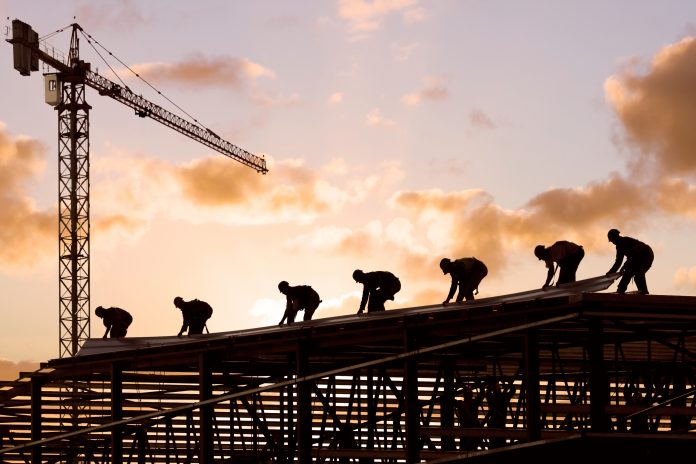Wes Simmons, Non-Executive Chairman of Open ECX explains to PBC Today the issue of burnout in the construction industry, and how the sector can keep its workers safe
The pandemic has highlighted several issues within the construction industry, that have been desperate for attention for years. Covid-19 forced companies to review ways of working, ensuring the best practices are in place to keep construction workers safe.
Most sectors are keeping new, better, employee-first processes in place – such as working from home initiatives, flexible working, and wellbeing schemes. At Open ECX we have instigated several initiatives that we discuss in more detail below.
But for the construction industry, the issues are a little more complex. Working from home and flexible working initiatives are impossible for many construction employees and there must be a focus on making up for lost time in a project driven environment.
Building back should of course be a priority, but we must ensure we build back better; mental wellbeing, balance, and the environment, should all be taken into consideration by those in construction.
Working in construction can be physical, which comes with obvious dangers – whether that be accidents on site, exposure to hazardous materials or continuous pressures on your body. Historically, these issues have been shrugged off with a ‘just get on with it’ attitude, leaving many workers ignoring the mounting pressures on their mental wellbeing and work/life balance leading to issues such as ‘burnout.’
Previous bad habits in the industry included paper waste – as most companies operated via old school print outs, and excessive driving – going from site to site just to gain signatures. Whilst being bad for the environment, it can also be a strain on employees, as they travel from pillar to post for tasks that could be carried out digitally.
Open ECX is a cloud-based solution that sits between suppliers and buyers in the supply chain and automatically processes invoices from suppliers, transmitting the data to the buyer’s finance team, cutting out manual processing and possible human error or delays, which improves efficiencies and allows companies to avoid unnecessary processes.
Work/life balance
It is recognised that there are a number of behaviours and processes that can help support employees with their work/life balance and the following are ones that we believe could be introduced in the construction sector to help companies avoid the issues of staff burnout:
- Set up a positive workplace culture: employees can often feel a pressure to work later if they have seen colleagues do the same, and don’t wish to be seen as the one who clocks off earlier than the rest. An expectation to do this can create the belief that longer hours = harder work or more effort, but this isn’t necessarily true. By setting an example of not overworking and ensuring you have a balance, this will encourage others to do the same and not fall into the trap of following the crowd.
- Ensure employee development is a priority: burnout caused by stress can be a result of disengagement with the job, which can be a result of lack of progression and opportunity. Encouraging up-skilling and outlining paths for progression can help people feel more engaged and optimistic about their future.
- Open an employee forum: SLTs can often lack awareness of any concerns their employees might have if there isn’t a safe space to share feelings or views on what issues people have at work. On construction sites, we need to remove the stigma of opening and replace confrontation with feedback forums.
- Don’t ignore the risk assessments (they are a necessary evil!): assessing any safety risks is a key step you can take to understand and mitigate any accidents at work. Rather than just assessing the potential physical risks such as lifting heavy objects and resolving with steel toe-cap boots, employers must assess the risk that lack of sleep and disengagement from work, can pose for individuals on site and the overall success of the project, then work out ways of supporting staff to ensure this doesn’t pose a problem.
- Adopt new ways of working: many of the hindrances in the construction industry are caused by hesitance to invest in new systems and processes whilst the traditional systems are often causing problems and increasing the workload and stress of workers.
The problem of burnout in construction has become more prevalent in recent years as countries set targets to rebuild following the financial crash in 2008 and we can anticipate that over the next decade, the financial impact of the Covid-19 pandemic will become clearer, and firms will be under real pressure to do more with the same or fewer people.
The reason we must focus on burnout in the construction industry is due to its unique working set up, which can often include working away from a support network for a long period, with unsocial hours and a lack of job security. It’s also important to recognise the hundreds of thousands self-employed construction workers, who aren’t subject to as many HSE employer regulations and suffer a different type of stress leading to burnout.
During the UK lockdowns, salaried construction workers were eligible for furlough as work dried up and building stopped – providing a little income security and reassurance.
However, the furlough scheme was largely limited for self-employed workers earning above the threshold, which left most self-employed site workers with a loss of income for months, causing an increase in financial and mental health problems.
Even as life returns to a sense of normality for most of us and we look to book annual leave to rest and recuperate, self-employed workers are not legally entitled to take time off.
In addition, making the decision to take time off results in a loss of income and many avoid taking leave for this reason. Lack of a real rest and period of relaxation is one of the main causes of burnout, so it is important to encourage this time off to improve mental wellbeing, as well as productivity and efficiency.
Tech solutions
Aside from the obvious causes of stress and burnout in the construction industry, there are also processes that can make the job harder for everyone involved. From slow payments to incorrect invoicing and disputed payments, construction firms often don’t have the correct systems in place to make the processes smoother.
The future of construction lies in tech solutions, where businesses can improve efficiencies whilst ensuring employees aren’t working beyond what is best for their wellbeing just to get the job done.
Construction projects are subject to harsh deadlines, large liabilities, and the need to manage cashflow. Whilst some of these factors cannot be controlled, solutions such as those we provide at Open ECX, can support with the organisation of the processes, and reduce the chances of employees experiencing burnout.
Finally, the HSE recognises the prevalence of burnout in the workplace and provides further guidance at www.hse.gov.uk/stress/.
Wes Simmons

Non-Executive Chairman of Open ECX
LinkedIn: Open ECX
Twitter: @openECX
Youtube: Open ECX Ltd














